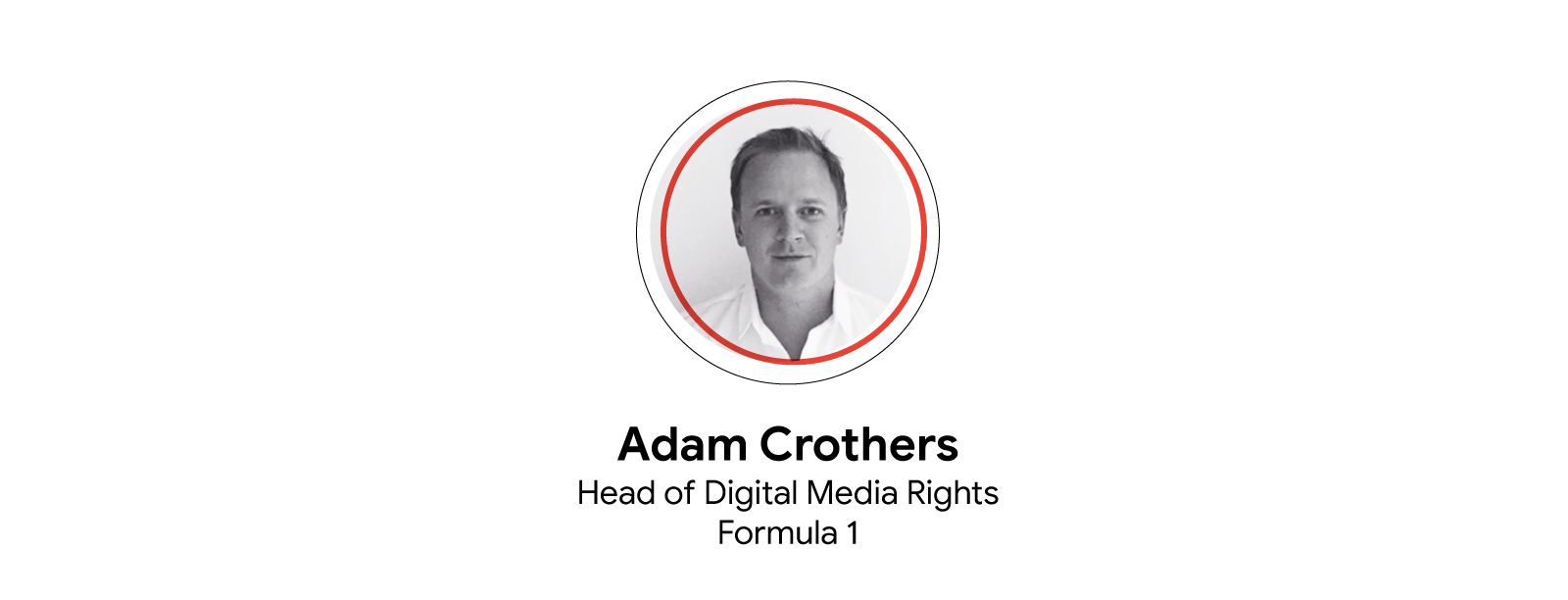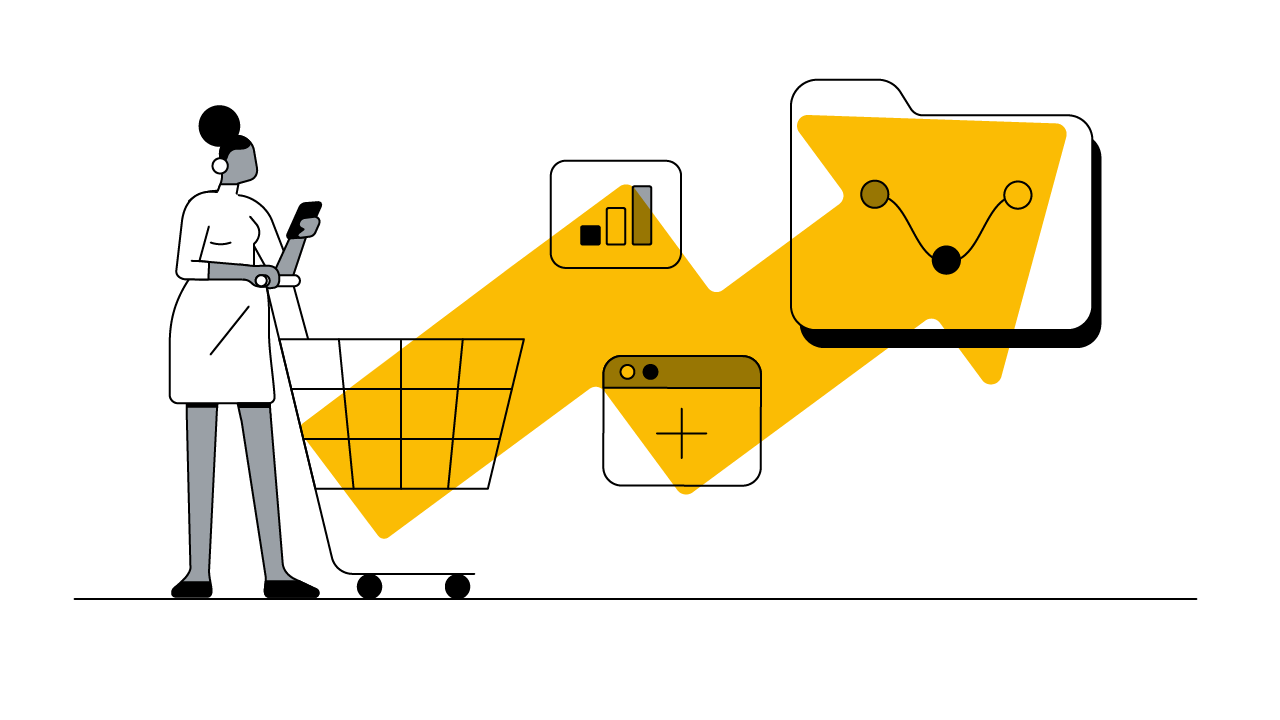With over 70 years of heritage behind Formula 1, Adam Crothers, head of digital media rights, shares the strategy behind a broadcast milestone for the championship and explains how a successful pivot to digital is engaging a new generation of F1 fans.

When Lewis Hamilton crossed the finish line at last year’s Eifel Grand Prix in Germany, it was a historic moment. Not only did it present a record-equalling 91st victory for the British driver, but the race was also the first to be live-streamed on YouTube. It was a milestone in the digital transformation of the Formula 1 (F1) championship.
It may have been fitting in a year that saw many events move online, but the broadcast also marked a bigger and longer-term shift in our strategic output. We know viewing behaviour is changing: the modern sports fan is seeking out content they love across different devices and platforms, and F1 made the decision to tap into these shifting audiences and reshape the fan experience in an online world.
The challenge and opportunity as F1 fans pivot to digital
As little as four years ago, Formula 1 had no digital media department. We were a brand that had massive global appeal, but no digital footprint.
The challenge — and the opportunity — was to build the brand online and connect with a new generation of motorsport fans, including those who were yet to watch their first Eifel Grand Prix. Our aim wasn’t to cannibalise other channels, but to discover how platforms such as YouTube could deliver incremental audiences and different experiences on top of that from traditional broadcast.
We felt there was a big opportunity with digital video for us to connect with both existing and new, younger fans and not just to tick a box.
Tip for marketers: Integrate to elevate your content or campaign
Connect with fans as they switch between platforms — and build incremental reach — with a more integrated approach to TV and digital video. To measure performance across channels, consider the benefits of Nielsen Total Ad Ratings (TAR).
5 learnings to engage a new generation of fans
This concerted drive to connect with younger F1 fans and build a strong digital presence has borne fruit. The F1 YouTube channel now has 5.3 million subscribers and an active online community, and continues to grow and reach new audiences.
We’ve built this engagement by leaning into YouTube trends to meet the needs of fans:
1. Dialling up personalities
With F1’s biggest stars mostly hidden behind visors, we sought to create video franchises that brought the drivers’ personalities and industry influencers to the forefront, with more Q&As and behind-the-scenes action.
2. Being playful with video franchises
We’ve put tried-and-tested YouTube formats, such as kids asking questions, through a motorsport lens.
3. Going big on lists with listicle videos
Top 10 biggest crashes, 5 crazy onboards, 5 feel good moments — ‘listicle’ videos are among the most popular on the Formula 1 YouTube channel.
4. Digging into the archives
From past racing heroes to classic races, we use archive content to tell old stories in new ways.
5. Knowing when to go in-depth
Quick-fire lists complement long-form documentaries and more specialist content around engineering and team performance.
We brought all these successful formats and learnings to the Eifel Grand Prix, culminating in the live stream of the big race itself — available free on the Formula 1 YouTube channel across seven European markets.
Tip for marketers: Learn from the best
Some of the most successful brand channels on YouTube have built engagement by utilising tried-and-tested video formats. According to British Vogue, the best tactic for identifying and developing winning franchises is simple: watch a lot of YouTube.
Building a strategic partnership with CUPRA
We partnered with the new high-performance automotive brand CUPRA as they were the perfect match for our marketing strategy. They had their first compact SUV — the Formentor — and the race provided an opportunity to engage a younger, more digital audience — as well as those with a high-affinity for motorsports.
To achieve this, the focus was on ownership — using YouTube Select to ‘roadblock’ all YouTube ad spots around the Eifel Grand Prix on the German live stream and F1’s YouTube channel.
“It was important to us that we owned 100% of the share of voice,” says Giuseppe Fiordispina, CUPRA’s marketing director. “We talked to all the audience who were watching the Formula 1 YouTube coverage in Germany. We were the only brand placed around the live stream.”
Tip for marketers: Tailor your YouTube strategy for the fans you want to reach
To connect with a specific audience or align with a particular genre, topic, or moment, there are a growing number of digital video solutions. YouTube Select lets you show up in the contexts and moments that matter to your audience — or roadblock entire online events — with a guaranteed share of voice or impressions.
The power of digital video in driving measurable results
This broadcasting milestone between YouTube and F1 delivered 1.7 million views across live stream content from the Eifel Grand Prix weekend — and 41 million views to a unique audience of 10.5 million F1 fans over the entire race week.1
CUPRA experienced similar positive results. “The brand integration drove a more than 4% awareness lift and helped us reach over 2 million unique users in our core target group,” says Fiordispina.
The venture also demonstrated the power of digital video to reach a new generation – 31% of our audience during the live stream were under 25 and 68% under 35.2 We know there's a younger audience out there who are keen to soak up our content in all its forms, and YouTube has proven to be the best way to reach new audiences.
Tip for marketers: Adapt your content strategy for changing viewing behaviours
With 33% of the Eifel Grand Prix audience watching on mobile phones and 30% via a connected television – plus over 90% of millennials saying they watch sports videos on YouTube – it pays to get your digital video and YouTube strategy right. Create content and campaigns that work in multiple formats.







